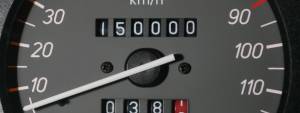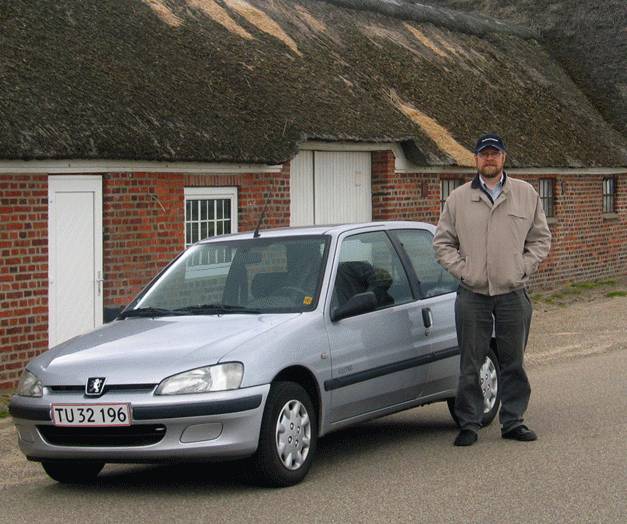EVguide
HEM HOME
|
19. Feb. 2008 EVguide today got this letter from Anton Bech: Our Peugeot 106 Electric have now done 150.000km

Our Peugeot 106 Electric have now done 150.000km since it went on the road on Dec.17th 1999. This is an average of 50km/day. It has been an exiting 8 years with this un-orthodox car. Powered with just an 11kW direct current motor with a peak capacity of 20 kW (27hp) and 260kg of NiCd batteries it sounds like this car should be a sedan version of the good old English milk float. Whatsoever, this car has been a fine engineering piece of a future car. With just 0.2kWh per km energy consumption, with top speed of 90km/h, with 80-100km per charge, with agility in town traffic and with 4 seats, this car has shown the worthiness of the electric car. We have used this car intensively not just for local commuting but also for long distance holiday trips. Making long trips became OK after the car got an equipment allowing it for 3 phase charging. With 3 phases, the charging rate is 1 minute per km, say an hour charging will allow us to drive 60km. The most critical concern in having an electric car is the condition of the batteries. Having a car with a battery value of +10.000Ä, the life performance of the battery is extremely important. I took the service of the batteries in my own hands in order to do it in the best way. The NiCd battery requires water refill and being used in such way, that the legendary memory effect of NiCd do not occurs. The water refill had been done for approximately each 5000km and only distilled water was used. The water was given after app. 2 hours top charging. The water consumption was between 10 and 15 litre. I try to avoid high battery temperatures during the first two charges after the refill by unplugging the radiator thermostat (the fan then runs all time during charging) and do these charges at night, when the temperature was low. The memory effect was avoided by managing the charging according to the need for energy for the next tour. The memory effect appears, when the batteries arenít discharged enough frequently! Often the car came home in the evening with 40-50% state of charge. This was just inferior to cover the next drive to work cycle. Instead of making a full charge, the car was charged to just 60% state of charge: hence the car would come home the next day after work in a low state of charge, which is good for the batteries. The car was then at the next charging allowed to be fully charged. By servicing and use the car with respect I have got 150.000km out of the original SAFT STM5 batteries dated october 1999. They are still functioning but show significant signs of tiredness. The car runs now out of power between 20-30% states of charge. Also the internal resistance has increased, but the voltage at end of charge is at normal, 140V, level. These signs may indicates, that the electrolyte is weak and could need to be replaced. This is not possible to do without taking the batteries out of the car and do it at a service centre. The capacity of these batteries has varied over the 150.000km and 8 years in following way: At the beginning the car could do app. 60km on a full charge and the power run out at 0% state of charge. After a few thousands km the car could do 80-90 km on a full charge and could drive app. 10km below 0% state of charge (0% on the indicator). During the first summer 118km was achieved on a single charge. During the second summer 100-110km per charge was easy to make and 129km was achieved on a single charge. During the third summer the car had reached its peak performance with 100-120km per charge and 140km at the best. Since then the performance has declined, first slowly, later at a faster rate. Taken in consideration that the car maker anticipated 100.000km battery life, the 150.000km seems fine. The discharged Amp hours may be near 180.000Ah, which equals 1.800 full charge/discharge cycles. I have now a new set of NiMH batteries ready for the car, saying I might not continue with the NiCdís in the coming time. The NiMH batteries allow me to have 50% more energy for the same weight and volume. With this set of batteries I anticipate to drive 120-150km per charge. They are service free and accept much better recharging without deep discharging. In fact the best battery life performance is achieved by charging and discharging between 20% and 80% state of charge. This means it is an advantage to recharge over night the energy spent during the day and i.e. once a week to make a top up charge to balance the cells. Best regards, Anton Bech RingkÝbing, Danmark Tlf. 97 32 43 57 e-mail: antonbech@mail.tdcadsl.dk 
|
EVguide
HEM HOME